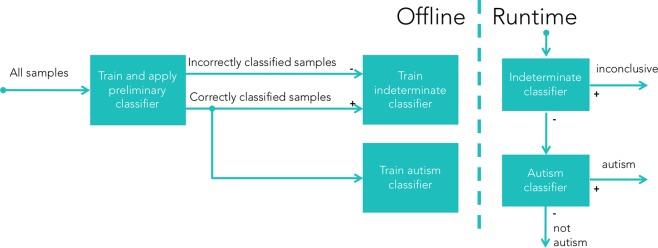Figure 2.
An illustration of the methodology for training diagnostic assessment algorithms capable of outputting one of three possible outcomes: “positive”, “negative”, or “inconclusive”. The first binary classifier is only used to assist in training and never at runtime. It is trained to predict binary “autism” vs “not autism”, and these labels are then compared with the true ASD results to label which samples are incorrectly classified. The samples with their “correct” and “incorrect” labels are used to train the classifiers at runtime. A “indeterminate” classifier is trained to predict which samples will have their ASD diagnosis misclassified, which serves as a filter to identify “inconclusive” cases at runtime, while only the predicted “correct” samples are used to train the final binary ASD diagnosis classifier.

